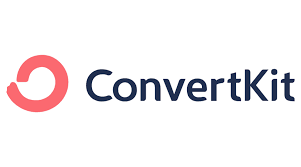In the ever-evolving world of email marketing, making the right choice for your business can feel like navigating a labyrinth. As we step into 2024, two giants stand out in this domain: ConvertKit and SendGrid. Each offers unique features and advantages, but which one truly aligns with your needs? In this detailed exploration, we’ll dissect these platforms, comparing their features, usability, pricing, and more, all in a simple, engaging conversation. Let’s dive into this friendly duel and see which contender, ConvertKit or SendGrid, deserves the crown of the best email marketing tool for 2024.
| ConvertKit | SendGrid |
|---|---|
 |  |
| G2 Score – 4.4 out of 5 stars | G2 Score – 4.0 out of 5 stars |
| TrustRadius Score – 8.8 out of 10 | TrustRadius Score – 7.6 out of 10 |
User Experience: The Gateway to Email Marketing Mastery
Imagine walking into two different restaurants. One greets you with a warm, inviting ambiance and a simple menu, while the other dazzles with a high-tech vibe and an extensive, sophisticated menu. This is akin to the initial encounter with ConvertKit and SendGrid.
ConvertKit: The Essence of User-Friendly Design
ConvertKit is like the cozy café down the street. It welcomes you with an intuitive, clean interface that feels familiar from the get-go. Known for its user-centric design, ConvertKit makes navigating the world of email marketing a breeze, especially for beginners or those who prefer a no-nonsense approach.
The platform guides you gently through each step – from setting up your first campaign to creating sign-up forms and managing your subscriber list. Its minimalistic design philosophy ensures that you’re not overwhelmed with options, making it an excellent choice for those who appreciate clarity and ease of use.
SendGrid: The Power of Advanced Functionality
SendGrid, on the other hand, is like the modern, high-tech restaurant that offers a diverse menu of options. It’s designed for those who crave detail and customization in their email marketing tools. The dashboard is a hub of functionality, rich with features and analytics.
With SendGrid, you embark on a more complex journey. The platform offers advanced capabilities like detailed analytics, extensive template options, and sophisticated segmentation tools. This complexity is a boon for seasoned marketers or tech-savvy users who want to leverage every possible advantage in their email campaigns.
Customization and Flexibility: Crafting Your Unique Brand Voice
ConvertKit offers ample room for customization within its emails. It’s like having a menu that allows you to tweak dishes to your taste. You can personalize your messages, ensuring they resonate with your audience, within a user-friendly email editor. However, when it comes to templates, ConvertKit opts for simplicity over extravagance.
SendGrid, akin to a gourmet kitchen, offers a broader range of customization. It allows you to tailor every aspect of your email, from intricate template designs to dynamic content integration. This level of customization is particularly useful for businesses that rely on strong visual branding and detailed targeting.
Navigating the User Experience
Choosing between ConvertKit and SendGrid for user experience boils down to your personal preferences and requirements. ConvertKit is the go-to choice for simplicity and ease of use, perfect for small businesses, bloggers, or those just starting with email marketing. SendGrid, with its rich features and customization options, is ideal for larger businesses or users who need a more robust, data-driven email marketing approach.
Email Automation: The Engine of Effective Email Marketing
Email automation is like the secret ingredient in a chef’s recipe – it can transform good email marketing into great. Let’s delve into how ConvertKit and SendGrid handle this crucial feature.
ConvertKit: Simplifying Automation
ConvertKit approaches email automation with the philosophy that less is more. It’s like a straightforward recipe that delivers delicious results without the need for complex procedures.
ConvertKit’s automation builder is intuitive, making it easy to create automated email sequences, such as welcome emails, nurture campaigns, and more. The visual automation interface is user-friendly, perfect for those who want effective automation without getting bogged down in complexities. It’s ideal for small businesses, bloggers, and solopreneurs who need to automate their email processes efficiently.
SendGrid: Advanced Automation for the Tech-Savvy
SendGrid, in contrast, is like a high-tech kitchen gadget – it offers more advanced features but requires a bit more know-how to use effectively.
SendGrid’s automation capabilities are extensive, allowing for more sophisticated and targeted email sequences. It includes features like A/B testing, detailed segmentation, and the integration of transactional emails. This level of sophistication is a boon for larger businesses or technically adept users who seek to fine-tune every aspect of their email marketing.
Personalization: Crafting Emails that Resonate
ConvertKit shines in creating personalized email experiences. Its segmentation features let you target specific audience groups with tailored content, making your emails feel more personal and relevant.
SendGrid also offers powerful segmentation tools, but with an added layer of complexity. It allows for granular customization, enabling highly targeted communication based on user behavior, preferences, and data insights.
Automation Efficiency: Striking the Right Balance
ConvertKit’s automation is about striking a balance between functionality and simplicity. It offers the essential features you need to automate your emails effectively, without overcomplicating things.
SendGrid’s automation, while more intricate, provides a richer set of features for those who want to dive deep into customization and analytics. This makes it more suitable for businesses with specific needs in sophisticated email marketing strategies.
Choosing Your Automation Partner
The choice between ConvertKit and SendGrid in terms of email automation depends on your specific needs and expertise. ConvertKit is perfect if you’re looking for an easy-to-use, efficient tool to automate your email marketing efforts. It’s well-suited for those new to email marketing or with limited time for setup and management.
SendGrid, with its advanced features, is ideal for more experienced marketers or larger businesses that require detailed, data-driven email strategies and have the resources to manage more complex automation setups.
Analytics and Reporting: Deciphering the Success of Your Email Campaigns
In the world of email marketing, understanding the impact of your campaigns is crucial. It’s like being a chef who tastes and tweaks dishes to perfection. Let’s compare how ConvertKit and SendGrid provide insights through analytics and reporting.
ConvertKit: Simplified and Actionable Analytics
ConvertKit treats analytics like a simple yet delicious recipe. The platform offers essential metrics such as open rates, click-through rates, and subscriber growth, all presented in an easily digestible format.
For users who need straightforward, actionable insights, ConvertKit’s approach is ideal. It’s perfect for small businesses or individuals who need to quickly understand the effectiveness of their campaigns without getting overwhelmed by too much data.
SendGrid: Comprehensive Data for In-Depth Analysis
SendGrid, on the other hand, is like a gourmet meal with layers of flavors. It offers a comprehensive suite of analytics and reporting tools that delve deep into the nuances of your email campaigns.
With SendGrid, you can analyze detailed metrics such as delivery rates, bounces, and engagement over time. This depth of data is particularly valuable for businesses that base their strategies on detailed analytics and require a thorough understanding of their email campaign performance.
Customization in Reporting: Tailoring Data to Your Needs
ConvertKit’s reporting, while more basic, allows for some level of customization, enabling users to focus on the metrics most relevant to their goals. It’s like customizing your coffee to your taste – a bit more milk or sugar, perhaps.
SendGrid offers extensive customization in its reporting. You can tailor your analytics dashboard to display the data that matters most to you, making it a powerful tool for users who rely heavily on data to guide their marketing decisions.
Real-Time Insights for Quick Adjustments
Both ConvertKit and SendGrid provide real-time data capabilities, allowing you to track the performance of your campaigns as they unfold. This feature is essential for making timely adjustments to your strategy.
Selecting the Right Analytics Tool
Your choice between ConvertKit and SendGrid for analytics and reporting should be based on your comfort with data and the level of detail you need. ConvertKit is suitable for those who prefer a straightforward, easy-to-understand analytics approach. It’s a great fit for small businesses or individuals who need quick insights.
SendGrid, with its advanced and customizable analytics, is better suited for businesses and marketers who base their strategies on detailed data analysis. It’s particularly well-suited for medium to large businesses that need to dive deep into email marketing metrics.
Pricing Models: Evaluating Cost-Effectiveness in Email Marketing Tools
In the landscape of email marketing, the right tool not only meets your functional requirements but also fits your budget. Let’s compare the pricing structures of ConvertKit and SendGrid to see which offers better value for your investment.
| ConvertKit | Free Plan: Offers basic features for up to 1,000 subscribers, including email broadcasts, landing pages, and forms. Creator Plan: Starting at $29/month for up to 1,000 subscribers, including automation and third-party integrations. The price increases with more subscribers. Creator Pro Plan: Starting at $59/month for up to 1,000 subscribers, adding advanced features like newsletter referral system, subscriber scoring, and advanced reporting. |
| SendGrid | Free Plan: Offers up to 100 emails per day forever. Essentials Plan: Starting at $14.95 per month for 50,000 emails per month, with no daily sending limit. Includes basic email features. Pro Plan: Starting at $89.95 per month for 100,000 emails per month, includes advanced features like dedicated IP addresses and sub-user management. Premier Plan: Custom pricing for high-volume senders needing advanced features and customization. |
ConvertKit: Straightforward and Scalable Pricing
ConvertKit’s approach to pricing is like a café with a simple, clear menu. You know exactly what you’re getting, and the cost is upfront, with no hidden surprises.
ConvertKit offers a free plan for beginners, which includes basic features suitable for getting started in email marketing. As your needs grow, so do the pricing options, which are based on the number of subscribers. This scalability makes ConvertKit an attractive option for small businesses or solo entrepreneurs who anticipate growth and require a platform that can grow with them.
SendGrid: Versatile Pricing for Diverse Needs
SendGrid’s pricing model is more like a custom order at a coffee shop, where you pay for the specific ingredients you choose. It’s tailored to fit a wide range of needs, from small startups to large enterprises.
SendGrid offers a unique pricing structure where you can choose between a plan based on the volume of emails or a more comprehensive package with advanced features. This flexibility can be beneficial for businesses with varying email marketing needs. However, it might require a bit more analysis to determine which plan best aligns with your specific requirements and budget.
Free Plans: A Test Run Without Risks
Both ConvertKit and SendGrid provide free plans, but with different offerings.
ConvertKit’s free plan is great for beginners, offering essential features like email sending and basic automation. This plan allows new users to experience the platform’s capabilities without any financial commitment.
SendGrid’s free plan is more focused on volume, allowing a significant number of emails per month. It’s a good fit for users who have a basic understanding of email marketing and need to send emails at a larger scale from the get-go.
Paid Plans: Upgrading for Advanced Features
As you move to paid plans, both platforms expand their feature set. ConvertKit’s paid plans are straightforward and scale based on the number of subscribers, while SendGrid’s pricing is more dynamic, catering to both volume and advanced feature needs.
Balancing Features with Budget
Choosing between ConvertKit and SendGrid in terms of pricing depends on your specific needs and budget. ConvertKit is ideal if you’re looking for a simple, predictable pricing model that grows with your subscriber list. It’s particularly suitable for content creators and small businesses.
SendGrid, with its flexible and volumetric pricing, is a better fit if you need a customizable plan based on your email volume and require advanced features. It’s well-suited for medium to large businesses or those with specific email volume requirements.

Related: Check out our free SEO suite

Integration Capabilities: Connecting Your Marketing Tools
In today’s digital marketing world, the ability to integrate your email marketing tool with other software is like having a well-connected network of roads in a city – it makes everything run smoother. Let’s examine how ConvertKit and SendGrid fare in terms of integration capabilities.
ConvertKit: Simplifying Integration for a Streamlined Experience
ConvertKit handles integrations like a friendly neighborhood café that knows its regulars. It offers a range of integrations with popular tools and platforms, focusing on simplicity and user convenience.
With ConvertKit, you can expect seamless integration with key services like content management systems, ecommerce platforms, and CRM software. This simplifies the task of connecting your email marketing activities with other aspects of your business, making it particularly attractive for small businesses and content creators.
SendGrid: Advanced Integration for a Comprehensive Approach
SendGrid approaches integrations like a major coffee chain, offering a wide variety of options to cater to all tastes. It provides a more extensive array of integration capabilities, particularly suited for businesses with complex digital ecosystems.
SendGrid’s integrations include advanced CRM systems, ecommerce platforms, and analytics tools. These integrations are designed to provide a deep and seamless connection between your email marketing and other business operations. This level of integration is particularly beneficial for medium to large businesses that operate within a complex digital environment.
Integration Usability: User Experience in Connecting Tools
ConvertKit’s integration process is straightforward and intuitive, requiring minimal technical expertise. This ease of integration ensures that even users with limited technical skills can take advantage of these features to enhance their email marketing strategies.
SendGrid’s integration capabilities, while comprehensive, might require a bit more technical know-how to set up. However, the depth of integration offered is a powerful asset for businesses that need a high level of customization and data synchronization between different platforms.
Matching Integration Needs with Business Complexity
Choosing between ConvertKit and SendGrid for integrations depends on your business requirements and technical comfort level. ConvertKit is the right choice if you’re looking for an email marketing tool that offers essential integrations in a user-friendly manner. It’s perfect for small businesses and independent creators who need hassle-free integration with key platforms.
SendGrid, with its wide range of advanced integration options, is better suited for businesses that require extensive integration capabilities. It’s ideal for larger businesses or those with complex needs that involve integrating a variety of tools and platforms for a cohesive marketing strategy.
Customer Support and Resources: Ensuring a Smooth Email Marketing Journey
Just like a good barista can make or break your coffee experience, effective customer support can significantly impact your journey with an email marketing tool. Let’s look at how ConvertKit and SendGrid stack up in terms of support and educational resources.
ConvertKit: Personalized Support and Community Engagement
ConvertKit approaches customer support like a cozy café where the staff knows your name and your regular order. It offers a warm, personalized approach to support, ensuring that users feel guided and supported at every step.
With ConvertKit, you get access to direct support through email and live chat, ensuring that help is readily available. Additionally, ConvertKit has fostered a strong community of users, offering a platform for sharing experiences and tips. This community aspect is not only helpful for resolving issues but also serves as a rich resource for learning and collaboration.
SendGrid: Comprehensive Support for Technical Needs
SendGrid’s approach to customer support is akin to a bustling coffee shop with a knowledgeable barista. It caters to a more technical audience, offering a range of support options designed to address complex queries and issues.
SendGrid provides comprehensive support through various channels, including email, live chat, and phone support. The platform also offers an extensive knowledge base, complete with tutorials, guides, and FAQs. This level of support is particularly beneficial for businesses with sophisticated email marketing setups or those who require technical assistance.
Educational Resources: Empowering Users
ConvertKit not only offers support in terms of problem-solving but also places a strong emphasis on user education. The platform provides resources like webinars, tutorials, and a blog filled with insightful content about email marketing best practices. These educational materials are designed to help users enhance their marketing skills and maximize the use of ConvertKit.
SendGrid, in line with its advanced capabilities, offers a wealth of learning materials. These include in-depth guides, case studies, and reports that offer insights into more technical aspects of email marketing. For users seeking to deepen their understanding of complex email marketing strategies, SendGrid’s resources are invaluable.
Tailoring Support to User Needs
The choice between ConvertKit and SendGrid in terms of customer support and resources depends on your specific needs and preferences. ConvertKit, with its accessible support and strong community focus, is ideal for those who value personalized assistance and collaborative learning. It’s particularly suited for small businesses, bloggers, and those new to email marketing.
SendGrid, offering a comprehensive suite of support options and in-depth educational materials, is well-suited for users with a technical background or those who require advanced support for their sophisticated email marketing strategies. It’s a great fit for medium to large businesses or those who need technical guidance in optimizing their email campaigns.
Deliverability and Reliability: Ensuring Your Emails Reach Their Destination
Just as a dependable coffee shop always delivers your favorite brew just the way you like it, in email marketing, the reliability and deliverability of your emails are crucial. Let’s see how ConvertKit and SendGrid perform in these vital aspects.
ConvertKit: Reliable Delivery with a Personal Touch
ConvertKit understands the importance of not just sending emails, but ensuring they land in the right inbox. It’s akin to a local café that knows exactly how you take your coffee and ensures it’s perfect every time.
ConvertKit has built a reputation for high deliverability rates. It achieves this through strong relationships with email service providers and ongoing efforts to maintain compliance with best email practices. This ensures that your emails have a high chance of reaching your subscribers’ inboxes, rather than getting lost in spam folders.
SendGrid: High-Volume Deliverability for Large-Scale Campaigns
SendGrid, on the other hand, is like a high-capacity coffee machine designed to serve large crowds without compromising on quality. It specializes in handling large volumes of emails while maintaining strong deliverability.
With its roots in transactional email delivery, SendGrid is equipped to handle massive volumes of emails with a robust infrastructure. This makes it a suitable choice for larger businesses or those with high-volume email requirements. Its deliverability is backed by advanced technology and dedicated IP options, ensuring that your emails stand the best chance of reaching their intended recipients.
Proactive Management of Email Reputation
Both ConvertKit and SendGrid recognize the importance of a good sender reputation in email deliverability. They provide tools and guidance to help you manage your email list health and sender reputation, which are critical for maintaining high deliverability rates.
Analytics and Feedback for Optimization
Along with reliable delivery, both platforms offer analytics and feedback mechanisms to help you understand how your emails are performing. This can include open rates, click rates, and bounce rates, all of which are essential metrics for optimizing your email campaigns and improving overall deliverability.
Ensuring Your Message is Heard
When choosing between ConvertKit and SendGrid for deliverability and reliability, consider the scale and nature of your email campaigns. ConvertKit is well-suited for small to medium-sized businesses, content creators, and bloggers who need reliable deliverability combined with a user-friendly interface. SendGrid is ideal for larger businesses or those with high-volume email needs, requiring a platform that can efficiently handle large quantities of emails with strong deliverability performance.
Template Design and Customization: Crafting the Perfect Email
In email marketing, the design and customization of your emails are like the presentation of a gourmet dish – it needs to be visually appealing and aligned with your brand. Let’s explore how ConvertKit and SendGrid cater to this aspect.
ConvertKit: Simplicity in Design
ConvertKit approaches email template design like a quaint bistro that focuses on simple, quality ingredients. The platform offers a range of basic yet elegant templates, prioritizing ease of use and readability.
The strength of ConvertKit’s templates lies in their simplicity and focus on content. You won’t find overly complex or flashy designs here. Instead, the platform provides a user-friendly email editor that makes it easy to customize templates to fit your brand and message, without needing extensive design skills.
SendGrid: A Palette of Sophisticated Options
SendGrid, in contrast, is like a high-end restaurant offering a wide range of exquisite dishes. It provides a diverse array of template designs, from simple to highly sophisticated, catering to a variety of branding and messaging needs.
With SendGrid, you have the flexibility to create custom templates that align perfectly with your brand’s aesthetic. The platform offers advanced design tools that allow for intricate customization, making it ideal for businesses that require a high degree of control over their email design.
Flexibility and Creative Control
ConvertKit’s template editor is designed for ease of use, allowing even those with no design background to create beautiful, effective emails. It’s perfect for businesses that want a straightforward, no-fuss approach to email design.
SendGrid’s editor offers more flexibility and creative control, suitable for users with specific design requirements or those who have the resources to delve into more detailed customization.
Mobile Responsiveness: Essential for Modern Email Marketing
Both ConvertKit and SendGrid understand the importance of mobile-responsive design. Their email templates are optimized to look great on any device, ensuring that your messages are effectively delivered regardless of how your audience accesses their email.
Matching Design Needs with the Right Tool
When it comes to template design and customization, your choice between ConvertKit and SendGrid will depend on your specific design needs and technical proficiency. ConvertKit is ideal for users who prefer simplicity and ease of use, offering basic templates that are easy to customize. It’s a great choice for small businesses, bloggers, and those who prioritize content over complex design.
SendGrid, with its wide range of templates and advanced customization options, is better suited for businesses that require a higher degree of control over their email design. It’s a perfect fit for medium to large businesses or those with specific branding requirements.
Conclusion:
In the quest for the best email marketing tool for 2024, ConvertKit and SendGrid emerge as two strong contenders, each with unique strengths. ConvertKit stands out for its user-friendly interface, simplicity in automation, and a focus on straightforward design and content-driven emails. It’s an ideal choice for small businesses, bloggers, and solopreneurs who value ease of use and efficiency in their email marketing efforts.
SendGrid, on the other hand, offers advanced features, comprehensive analytics, and a wide array of customizable templates, making it well-suited for larger businesses or those with high-volume email needs. Its robust infrastructure and detailed customization options cater to users who require a more sophisticated, data-driven approach to email marketing. Ultimately, the decision between ConvertKit and SendGrid will depend on your specific business needs, technical expertise, and design preferences. Whether you prioritize simplicity and ease of use or advanced features and customization, both platforms offer compelling solutions to enhance your email marketing strategy in 2024.
Read Next
- Content Marketing in the Age of AI: Opportunities and Challenges
- The Role of Emotion in Content: Crafting Stories that Resonate
- Interactive Quizzes and Polls: Boosting Engagement in Content Marketing
- Creating a Content Calendar: Organizing for Consistency and Impact
- Influencer Partnerships: Amplifying Your Content’s Reach and Credibility






















Comments are closed.